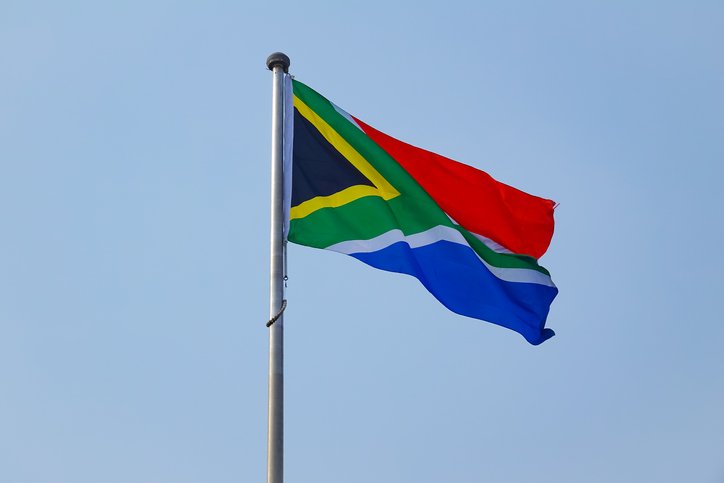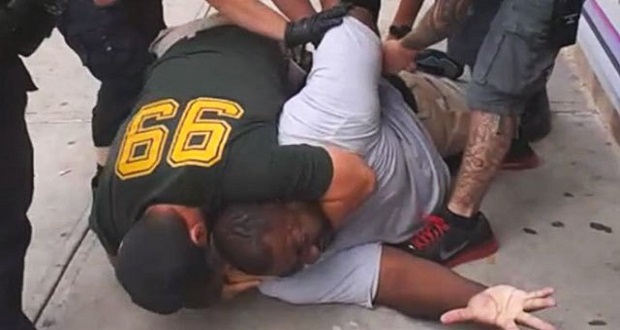
In the aftermath of apartheid, South Africa embarked on a process of creating a “Truth and Reconciliation Commission.” The purpose of the commission was allowing perpetrators of crimes during apartheid to come clean with their roles in those crimes and to provide families with the information needed to bring closure to their unanswered questions about what happened to their loved ones. Here, I will attempt to give you an idea of why I and many like me view the Truth and Reconciliation Commission as a cosmetic procedure that looked like the real deal, but on closer inspection was just a mirage of attempted reconciliation, with half-truths and a lack of transformational power needed to move a nation beyond the hurt and trauma that occurred during the very volatile, uncertain, complex, and ambiguous (VUCA) apartheid.
The Truth and Reconciliation Commission was just a mirage of attempted reconciliation, with half-truths and a lack of transformational power needed to move a nation beyond the trauma that occurred during apartheid. Share on XOne attendee at a recent webinar I was involved in shared that she was confused by the fact that I commented on the truth and reconciliation process as cosmetic and that the divide between Black and white people remains massive and volatile in South Africa. She commented on the fact that the South African model of the truth and reconciliation process is the standard followed by the world because of its perceived success. It was this that ultimately prompted me to write this article.
As a matter of reference and for those who don’t know this, South Africa was freed of colonialism officially in 1961, but instead of building a democratic society, the so called “Boers,” in collaboration with English Europeans, forged a system called apartheid that operated much like colonialism, with the only difference being that that the oppressor was located locally and not in some other western kingdom. Apartheid was a white supremacist system, much like segregation was in the USA, and it was enforced through law and political policies.
What it meant was that Black people were subjected to being treated as less than human. They were forced out of their homes and off their land illegally and violently; their ownership of the land was stripped and given to white people. The violence was further enforced by lack of service delivery, infrastructure, quality education, healthcare, and other basic needs. While it’s difficult to capture the full disgust linked to apartheid in a few sentences, it should say enough that apartheid was found to be a crime against humanity.
“The United Nations General Assembly regularly condemned apartheid as contrary to the Charter of the United Nations from 1952 until 1990; and it was regularly condemned by the United Nations Security Council after 1960. In 1966, the UN General Assembly labelled apartheid as a crime against humanity, condemning the policies of apartheid practised by the Government of South Africa as a crime against humanity which was later endorsed by Security Council”.[1]
As mentioned, the Truth and Reconciliation Commission was established to provide victims of South African apartheid, as well as their families and perpetrators, an opportunity to share information that would help families find closure as to what happened to their family members during the struggle for justice. It also allowed for families to apply for reparations and support where it was needed.
One part of the South African Reconciliation Commission process that remains baffling was that perpetrators could come and give a visual blow-by-blow of how they annihilated innocent people and then just got to walk away from the commission with no repercussions. Some took the opportunity to go to the commission and confess their crimes, then leave and go on to live long and happy lives. Meanwhile, families were left to pick up the pieces and deal with the trauma of learning how cruel and inhumane the last moments of their family member’s lives played out. While this would not be an ideal situation to be in, many said that it was better to know the truth than to not know.
Part of the South African Truth and Reconciliation Commission process was that perpetrators could give a blow-by-blow of how they annihilated innocent people and then walk away with no repercussions. Share on XThe big issue with the reconciliation process was that some people who were viewed as significant to the process did not deliver when they appeared before the commission. One such person was the last apartheid president of the Republic of South Africa, F.W. de Klerk, who didn’t provide any significant insights into the apartheid regime and the crimes committed against Black people. In fact, he was labelled an apartheid apologist by many South Africans. I had a personal encounter with him at a conference in 2017 when I asked him during the question and answer session how he plans to contribute to the dismantling of the white supremacist system and the eradication of white peoples’ unfair white privileges as a result of his apartheid system.
He became enraged, as he has done on other occasions and responded by saying, “White people have already apologised for apartheid, and what more do we want them to do?” I did not get to respond at the time, as the situation had to be deescalated by the host. What I wanted to say though, was: a good start after apologizing for apartheid would have been to give back the land, share the economic resources, lock up criminals guilty of anti-Black racist crimes, and institute government-endorsed reparations, compulsory interracial institutional reforms, geographical justice for victims of forced removals… I could go on for days… but let’s get back to the issue at hand.
A good start after apologizing for apartheid would have been to give back the land, share the economic resources, lock up criminals guilty of anti-Black racist crimes, and institute government-endorsed reparations. Share on X“On 10 December 1993, de Klerk and Mandela were jointly awarded the Nobel Peace Prize in Oslo for their work in ending apartheid”.[2] Nelson Mandela was not impressed by this and questioned how it made sense that de Klerk would be eligible for the Noble Peace Prize for ending the oppression which he played a key part in. Something many still question today, but we shouldn’t waste too much time on this because white supremacy is a global pandemic, and it has the ability to help whitewash any injustices against Black people no matter how severe the crimes or the racial make-up of the country. Dr Allan Boesak, a well know antiapartheid activist, noted how the truth and reconciliation process lacked one of the most important factors, which is justice for victims and their families.
The Truth and Reconciliation Commission process promised hope and a pathway to some sort of healing. Two decades later, however, the process is widely criticised and regarded by many as having been a failure.[3]
de Klerk and Mandela were jointly awarded the Nobel Peace Prize, and Mandela questioned how it made sense that de Klerk would be awarded for ending the oppression which he played a key part in perpetuating. Share on XIn conclusion, I would like to advise people around the world to take a hard and long look into certain accepted realities of truth and reconciliation processes, to honestly and critically assess whether assumptions about the needs and experiences of those who are impacted by the process are actually the reality.
People around the world should take a hard look into truth and reconciliation processes, to honestly assess whether assumptions about the needs and experiences of those who are impacted are actually the reality. Share on XI can tell you now with clear conviction that South Africa’s Truth and Reconciliation Commission project did not heal the trauma of apartheid; in fact, it left many people disillusioned by the process. South Africa remains a racially divided country with much of the apartheid visual and spatial planning still intact and with white people still holding the economic and social power that has kept the balance of power in the hands of white people, while continuing to oppress Black people. The sad thing is that many South Africans and allies across the world had great hope and excitement at the prospect that South Africans would be freed and finally be able to enjoy the abundant resources available in the country. Instead, Black people were left disillusioned as a result of corruption, patronage, nepotism, and the sale of the country to the highest bidder by self-absorbed politicians whose greed overpowered their initial hunger and hope for justice for all.
Recommendations for Post-Apartheid Truth and Reconciliation
- The government needs to hold perpetrators accountable, as was done with those who committed crimes during the Holocaust.
- Families should have clear answers about what happened to their loved ones and where their bodies are.
- We need to allow opportunities to speak about reparations and how families should be compensated.
- We need more white people to expose the information being taken to the grave by those who formed part of the apartheid oppressive system.
- We need to see government do more in revisiting some of the cases that were closed and try find answers for families of victims murdered during apartheid.
- We should also hold accountable countries in the West who funded the apartheid government on their responsibility and some form of reparations that they should be held accountable for.
The aforementioned panel discussion on white supremacy in the global context can be viewed here. This session offers some important reflections from international racial justice leaders looking at where we are now and how we can advance healing and cultural transformation. Please learn more about our work at thesja.org, and consider donating to Edwin Cleophas at the Social Justice Agency via Paypal.
[1] https://www.dailymaverick.co.za/article/2020-02-21-south-africa-apartheid-crimes-against-humanity-and-the-rule-of-law-quo-vadis/
[2] https://www.nobelprize.org/prizes/peace/1993/mandela/facts/
[3] https://www.news.uct.ac.za/article/-2017-04-25-lessons-from-the-trc-then-and-now


















